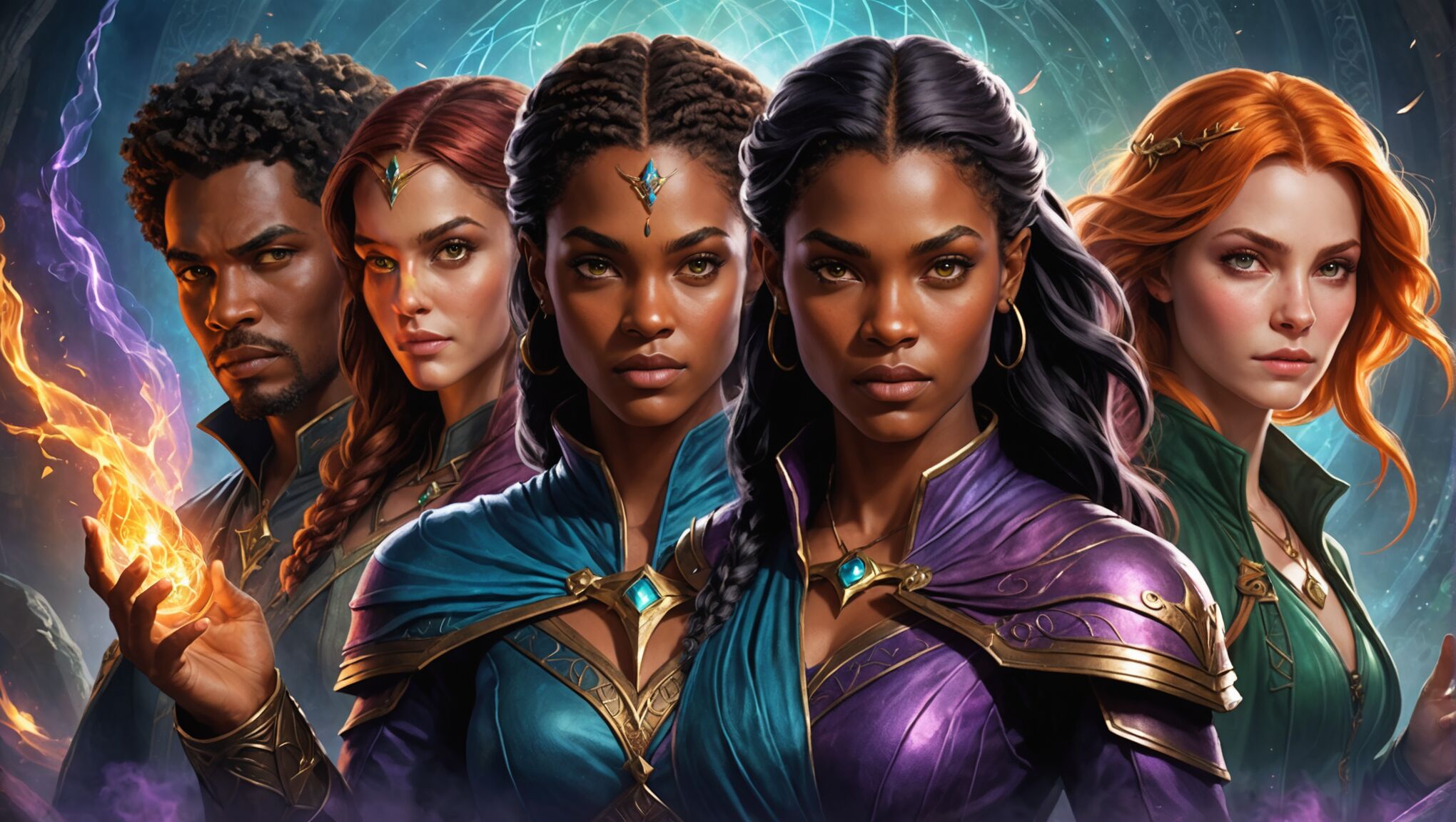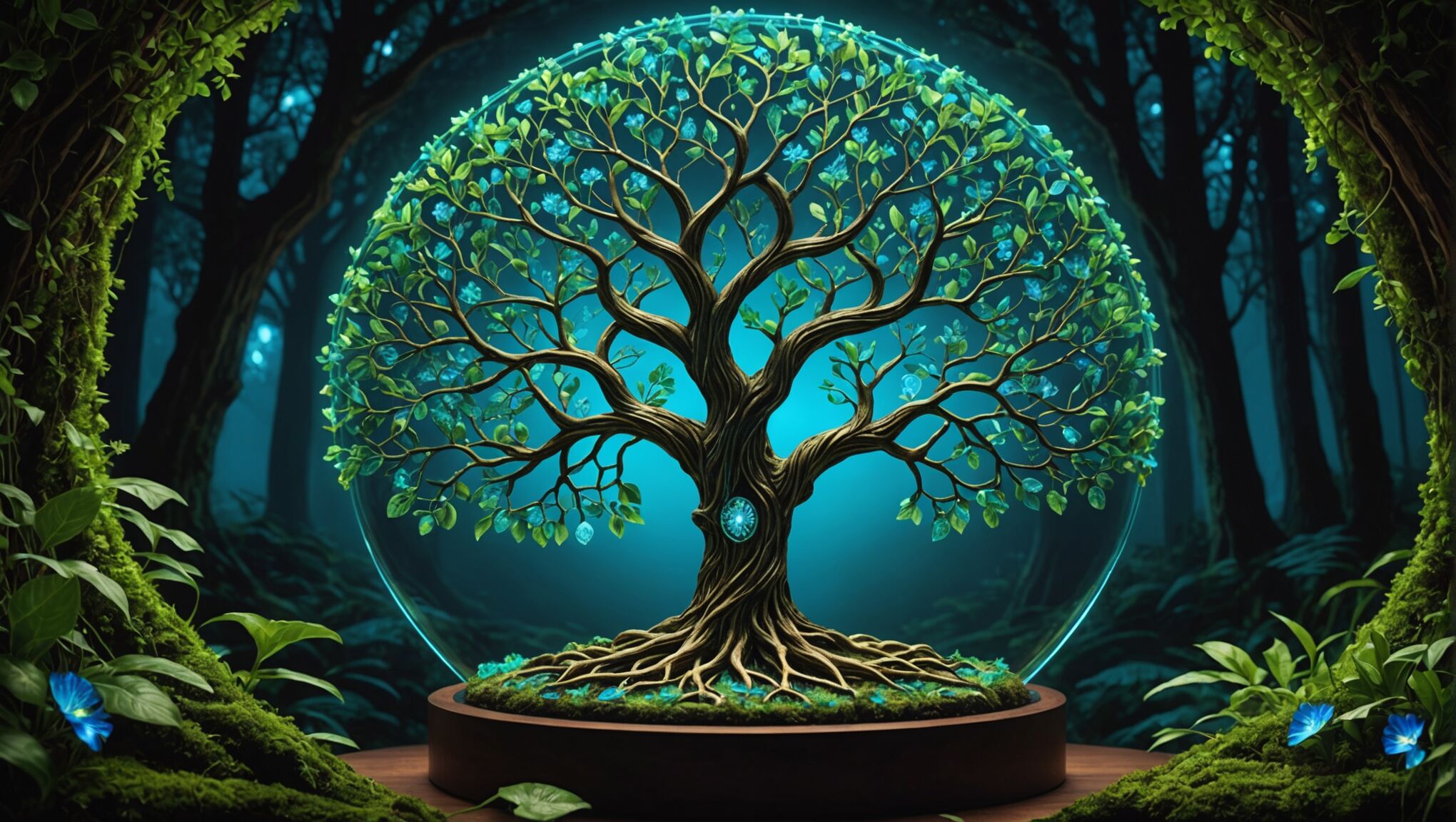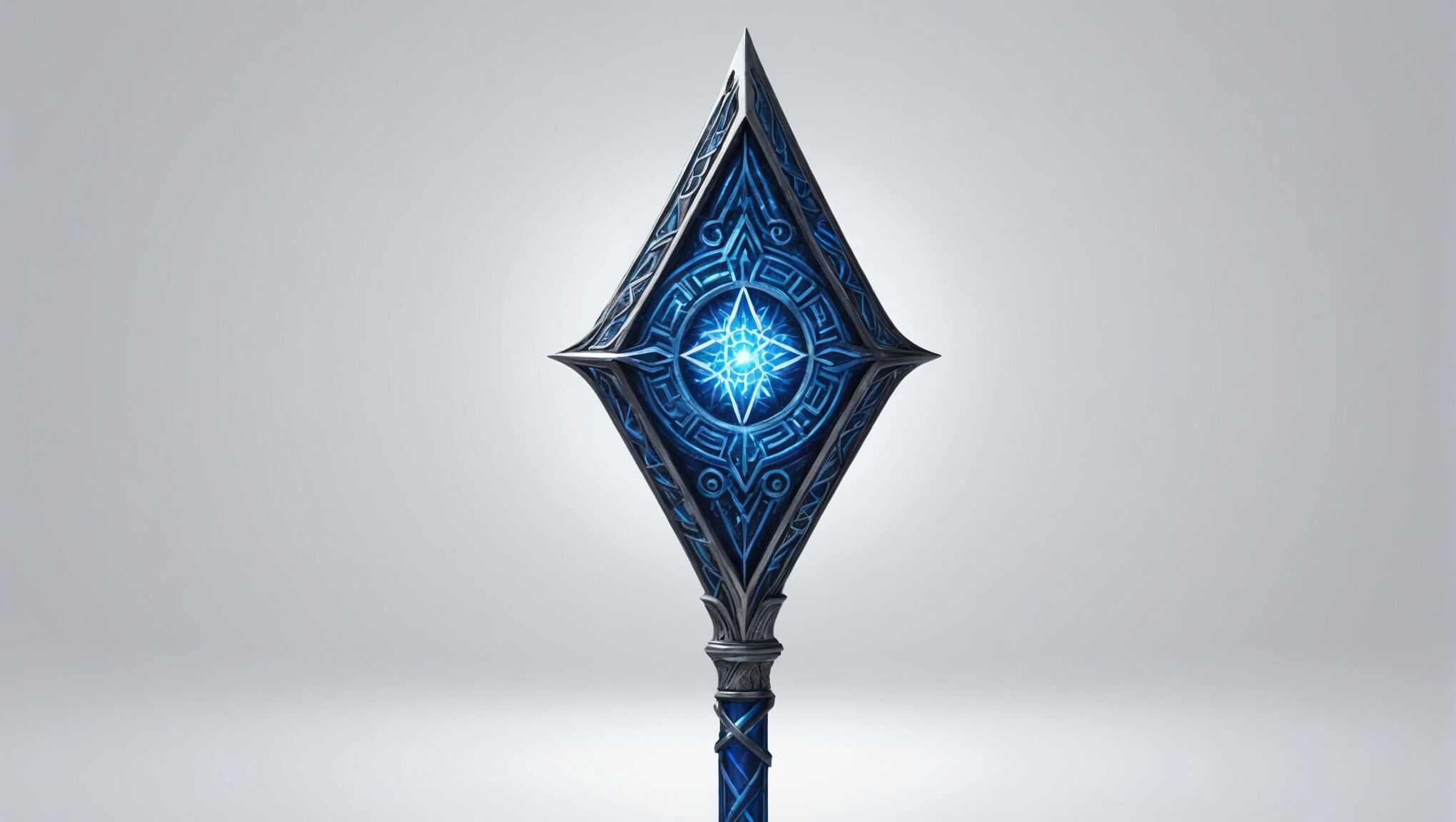blog
Modern Fantasy Cover Trends to Watch in 2024
As we look ahead to 2024, the realm of modern fantasy book covers is experiencing a significant shift towards digitally created artworks and stunning 3D rendered landscapes. These visually captivating designs are pushing the boundaries of imagination and transporting readers to otherworldly realms before they even open the book. Hyper-realistic fantasy environments are becoming increasingly popular, with artists utilizing advanced software to craft intricate details that were once impossible to achieve through traditional mediums. From floating islands suspended in misty skies to sprawling magical cities with impossible architecture, these digital landscapes are setting new standards for fantasy cover art.
The use of 3D rendering techniques allows for a greater depth of field and a more immersive visual experience. Artists are experimenting with lighting effects, particle systems, and dynamic compositions to create covers that seem to leap off the shelves. This trend is particularly evident in covers featuring epic fantasy landscapes, where vast mountain ranges, enchanted forests, and mystical portals are rendered with breathtaking precision. The ability to manipulate perspective and scale in digital art also enables cover designers to play with the viewer’s perception, often incorporating surreal elements that blur the line between reality and fantasy.
Moreover, digital art is allowing for more experimental and abstract interpretations of fantasy themes. Artists are combining traditional fantasy motifs with futuristic elements, creating unique visual narratives that reflect the evolving nature of the genre. This digital revolution in cover design is not only attracting readers but also inspiring authors to envision their worlds in new and exciting ways, ultimately enriching the fantasy genre as a whole.
Minimalist designs with bold typography
 As the fantasy genre evolves, a striking trend in cover design is emerging: minimalist aesthetics paired with bold typography. This approach strips away the clutter, focusing on a single powerful image or symbol that captures the essence of the story. The use of negative space becomes a crucial element, allowing the viewer’s imagination to fill in the gaps and creating an air of mystery that invites closer inspection.
As the fantasy genre evolves, a striking trend in cover design is emerging: minimalist aesthetics paired with bold typography. This approach strips away the clutter, focusing on a single powerful image or symbol that captures the essence of the story. The use of negative space becomes a crucial element, allowing the viewer’s imagination to fill in the gaps and creating an air of mystery that invites closer inspection.
Color palettes in these minimalist designs are often limited but impactful. Monochromatic schemes or duotones are popular choices, with designers using contrasting hues to create visual tension and draw the eye to key elements. The restrained use of color amplifies the impact of the chosen imagery, whether it’s a lone magical artifact, a silhouette of a mythical creature, or an abstract representation of the book’s central theme.
Typography takes center stage in these designs, with book titles and author names becoming integral parts of the artwork. Fonts are carefully selected to convey the tone and genre of the book, ranging from elegant serifs for high fantasy to edgy, modern sans-serifs for urban fantasy. The size and placement of text are just as important as the font choice, with designers often opting for oversized letters that dominate the cover or innovative layouts that interact with the visual elements.
Less is more. Perfection is achieved, not when there is nothing more to add, but when there is nothing left to take away.
This famous quote by Antoine de Saint-Exupéry encapsulates the philosophy behind the minimalist trend in fantasy cover design. By stripping away unnecessary elements, designers create covers that are not only visually striking but also more memorable and distinctive on crowded bookstore shelves or digital marketplaces.
The simplicity of these covers allows for greater flexibility in marketing and branding. The clean designs translate well across various formats, from physical books to e-book thumbnails, ensuring consistent visual impact regardless of how the book is displayed. This adaptability is particularly valuable in the digital age, where covers need to be recognizable even when reduced to small icons on mobile devices.
Minimalist covers with bold typography also reflect a maturing of the fantasy genre, moving away from the busy, illustration-heavy covers of the past. This shift suggests a growing confidence in the genre’s ability to attract readers without relying on overt visual cues of fantastical elements. Instead, these covers invite readers to imagine the worlds within, creating an air of sophistication that appeals to both long-time fantasy enthusiasts and newcomers to the genre.
As this trend continues to gain traction, we can expect to see more fantasy covers that challenge traditional expectations, using simplicity and typography to create powerful first impressions that resonate with modern readers.
Character-focused covers with diverse representation

In 2024, fantasy book covers are increasingly placing characters at the forefront, emphasizing diverse representation that reflects the rich tapestry of modern society. This shift is not just about inclusivity; it’s about broadening the scope of fantasy narratives and challenging long-held stereotypes within the genre. Cover artists are now crafting images that showcase protagonists from various ethnic backgrounds, body types, ages, and abilities, ensuring that readers from all walks of life can see themselves reflected in these magical worlds.
The trend extends beyond mere visual representation to encompass a wider range of cultural influences in character design. Traditional fantasy archetypes are being reimagined through diverse cultural lenses, resulting in fresh interpretations of wizards, warriors, and mythical beings. This approach not only enriches the visual landscape of fantasy covers but also signals to readers that the stories within are likely to offer new perspectives and experiences.
Close-up portraits are becoming increasingly popular, allowing for detailed depictions of characters that capture nuanced expressions and emotions. These intimate portrayals create an immediate connection between the reader and the protagonist, inviting them into the character’s world from the moment they see the cover. Artists are paying special attention to eyes, often described as windows to the soul, using them to convey depth, mystery, and the promise of an enthralling narrative.
Dynamic poses and action scenes featuring diverse characters are also on the rise, breaking away from static, formal representations. These covers showcase characters in the midst of spellcasting, wielding unique weapons, or interacting with fantastical creatures, giving potential readers a taste of the excitement that awaits them. The energy in these compositions serves to draw the eye and spark curiosity about the character’s journey.
Moreover, cover designs are increasingly featuring ensemble casts, highlighting the importance of community and teamwork in fantasy narratives. These group compositions not only showcase diversity but also hint at complex character dynamics and interconnected storylines. By presenting a range of characters with distinct appearances and apparent roles, these covers promise readers a rich, multi-faceted adventure.
The use of color in character-focused covers is becoming more bold and symbolic. Vibrant hues and unexpected color combinations are being employed to signify magical abilities, emotional states, or cultural backgrounds. This thoughtful use of color not only makes covers more visually striking but also adds layers of meaning that readers can unpack.
As the fantasy genre continues to evolve and embrace diverse voices, we can expect to see even more innovative approaches to character representation on book covers. This trend is not just changing the face of fantasy literature; it’s expanding its heart and soul, inviting readers from all backgrounds to find their place in worlds of magic and wonder.
Nature-inspired motifs and organic textures
 As we delve deeper into the realm of fantasy cover design, a resurgence of nature-inspired motifs and organic textures is making a significant impact. This trend reflects a growing appreciation for the natural world and its inherent magic, resonating with readers who seek a connection to the primal and mystical aspects of fantasy storytelling.
As we delve deeper into the realm of fantasy cover design, a resurgence of nature-inspired motifs and organic textures is making a significant impact. This trend reflects a growing appreciation for the natural world and its inherent magic, resonating with readers who seek a connection to the primal and mystical aspects of fantasy storytelling.
Artists are incorporating intricate botanical patterns, reminiscent of Art Nouveau designs, into their cover illustrations. These flowing, plant-based motifs often frame central images or intertwine with typography, creating a sense of organic growth and movement. The use of these elements not only adds visual interest but also subtly reinforces themes of nature’s power and the interconnectedness of all living things.
Textures play a crucial role in this trend, with designers employing techniques that mimic natural materials. Covers may feature the rough grain of bark, the delicate veins of leaves, or the smooth polished surface of river stones. These tactile qualities invite readers to engage with the book on a sensory level, even before opening its pages. Digital artists are pushing the boundaries of realism, creating textures so lifelike that viewers may feel compelled to reach out and touch the cover.
Color palettes inspired by nature are dominating this trend, with earthy tones, forest greens, and oceanic blues taking center stage. These colors evoke the essence of different ecosystems, from lush jungles to serene woodlands or mysterious underwater realms. Designers are also experimenting with bioluminescent effects, incorporating glowing elements that suggest magical properties within natural settings.
The integration of animal motifs is another aspect of this trend, with creatures both real and mythical being woven into cover designs. These animals often serve as symbols or totems, hinting at the story’s themes or the protagonist’s journey. The way these creatures are depicted ranges from realistic renderings to stylized, almost tribal representations, adding a layer of cultural richness to the cover art.
Fractal patterns and sacred geometry are also making their way into nature-inspired cover designs. These mathematical yet organic shapes suggest the underlying order in nature’s chaos, appealing to readers who appreciate the intersection of science and magic in fantasy narratives.
As environmental concerns continue to grow in our collective consciousness, these nature-inspired covers serve as a reminder of the beauty and fragility of our world. They invite readers to consider the role of nature in fantasy storytelling and, by extension, in our own lives. This trend challenges us to think about the relationships between humans, nature, and magic, encouraging a deeper exploration of these themes within the pages of the books themselves.
The use of organic textures and nature motifs in fantasy cover design is more than just an aesthetic choice; it’s a reflection of our evolving relationship with the natural world. As readers, we’re invited to contemplate how these visual elements might relate to the stories within, and how they might inspire us to see the magic in our own environment. This trend prompts us to question the boundaries between the fantastical and the real, suggesting that perhaps the most enchanting realms are not so far removed from our own world after all.
Reimagined classic fantasy symbols and iconography

Fantasy literature has long been associated with iconic symbols and imagery, but in 2024, we’re seeing a fresh take on these classic elements. Cover designers are reimagining traditional fantasy iconography, infusing it with modern sensibilities and unexpected twists. The familiar sword and sorcery motifs are being deconstructed and reassembled in innovative ways, challenging readers’ expectations and breathing new life into age-old symbols.
Dragons, for instance, are no longer just fire-breathing behemoths. They’re appearing in covers as intricate, serpentine forms woven into the very fabric of the design, sometimes barely discernible at first glance. Their scales might form patterns that double as constellations or merge with technological elements, blurring the lines between fantasy and science fiction. This subtle approach invites viewers to look closer, rewarding them with layers of meaning and symbolism.
The classic wizard’s staff is evolving too. Instead of the traditional wooden rod topped with a crystal or orb, we’re seeing staffs that incorporate modern design elements. Some appear as sleek, minimalist objects with glowing runes, while others take on organic forms that seem to grow and change. These reimagined staffs often serve as focal points in cover compositions, their unique designs hinting at the magic systems within the stories.
Magical artifacts like amulets, rings, and spell books are also getting makeovers. Designers are experimenting with geometric shapes and abstract representations of power. A ring of power might be depicted as a series of interlocking energy fields rather than a physical object. Spell books are being rendered as holographic displays or as swirling vortexes of text and symbols, challenging the traditional bound tome concept.
Even fantastical creatures are being reimagined. Unicorns might appear with bioluminescent manes or as ethereal beings composed of starlight. Phoenixes are depicted as swirling flame patterns that only reveal their avian form when viewed from certain angles. These fresh interpretations maintain the essence of the original symbols while offering a contemporary aesthetic that appeals to modern readers.
Use magical symbols effectively. Explore the site here.
The use of negative space is becoming increasingly important in these reimagined designs. Silhouettes of legendary beasts or heroes might be formed by the absence of elements rather than their presence, creating striking visual effects that play with perception. This technique not only modernizes classic imagery but also adds an element of mystery and intrigue to the cover.
Color palettes for these reimagined symbols are moving beyond the traditional fantasy hues. Designers are embracing bold, unexpected color combinations that subvert genre expectations. A dragon might be rendered in neon pink and electric blue, while a wizard’s staff could glow with an otherworldly green against a stark white background. These color choices serve to further differentiate the new interpretations from their classic counterparts.
As fantasy continues to evolve and cross-pollinate with other genres, we can expect to see even more creative reinterpretations of classic symbols. These reimagined icons serve not just as decoration but as gateways into the new worlds and ideas contained within the books they adorn. They signal to readers that while the fundamental elements of fantasy remain, the stories themselves are pushing boundaries and exploring uncharted territories in the realm of imagination.

